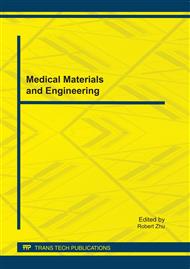p.350
p.355
p.360
p.369
p.374
p.379
p.385
p.394
p.400
Nutritional Components in the Fruit of Different Blueberry Cultivars in Nanjing
Abstract:
In order to understand the nutritional characteristics of blueberries (Vaccinium spp.), provide the fundamental basis for its processing and utilization, 13 blueberry varieties were studied on their major nutrient compositions in fruit. The results showed that blueberry fruit contained 10.31 ± 0.98% of soluble solids, of which 77.13% was soluble sugar and 89.02% of soluble sugar was reducing sugar. Average content of organic acids was 0.79 ± 0.23% and sugar-acid ratio was 10.91 ± 3.38. Total polyphenol content was 4.921 ± 0.738 mg·g-1, of which anthocyanin was 1.441 ± 0.435 mg·g-1 and ellagic acid 0.921 ± 0.098 mg·g-1. Nutrient content and their components had difference between blueberries varieties.
Info:
Periodical:
Pages:
374-378
Citation:
Online since:
November 2011
Authors:
Keywords:
Price:
Сopyright:
© 2012 Trans Tech Publications Ltd. All Rights Reserved
Share:
Citation:


